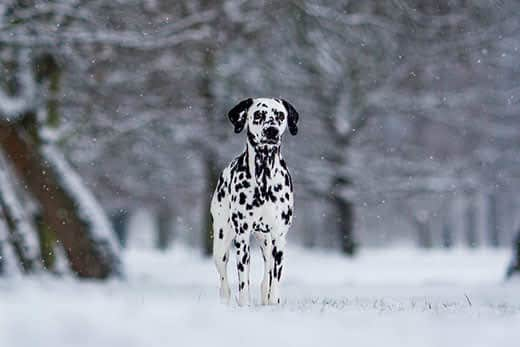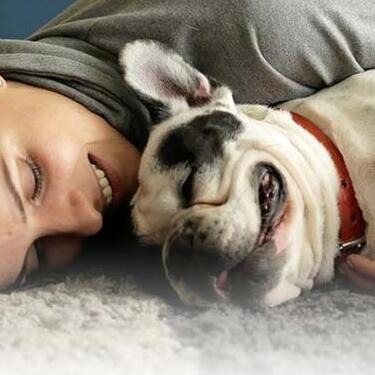
-
Find the right food for your pet
Take this quiz to see which food may be the best for your furry friend.
Find the right food for your pet
Take this quiz to see which food may be the best for your furry friend.
Featured products
 Adult 7+ Perfect Digestion Chicken, Whole Oats & Brown Rice Recipe Dog Food
Adult 7+ Perfect Digestion Chicken, Whole Oats & Brown Rice Recipe Dog FoodScience Diet's breakthrough nutrition supports ultimate digestive well-being & healthy microbiome for dogs age 7+
Shop Now Adult Healthy Cuisine Roasted Chicken, Carrots & Spinach Stew Dog Food
Adult Healthy Cuisine Roasted Chicken, Carrots & Spinach Stew Dog FoodDelicious roasted chicken paired with tender vegetables in a succulent stew
Shop Now Small & Mini Savory Stew with Chicken & Vegetables Dog Food
Small & Mini Savory Stew with Chicken & Vegetables Dog FoodA delicious complement to the nutrition of Science Diet Small & Mini 7+ dog food
Shop NowFeatured products
 Adult 7+ Tender Tuna Dinner Cat Food
Adult 7+ Tender Tuna Dinner Cat FoodWith delicious chunks in a decadent gravy
Shop Now Adult Savory Entrée Can Variety Pack Cat Food
Adult Savory Entrée Can Variety Pack Cat FoodPrecisely balanced nutrition with the delicious taste of savory minced chicken to help fuel the energy needs of cats during the prime of their life
Shop Now Adult 7+ Senior Vitality Chicken & Vegetable Stew Cat Food
Adult 7+ Senior Vitality Chicken & Vegetable Stew Cat FoodImproves Everyday Ability to Get Up & Go
Shop Now -
Dog
- Dog Tips & Articles
-
Health Category
- Weight
- Food & Environmental Sensitivities
- Urinary
- Digestive
- Joint
- Kidney
-
Life Stage
- Puppy Nutrition
- Adult Nutrition
- Senior Nutrition
Cat
- Cat Tips & Articles
-
Health Category
- Weight
- Skin & Food Sensitivities
- Urinary
- Digestive
- Kidney
-
Life Stage
- Kitten Nutrition
- Adult Nutrition
Featured articles
 Does My Pet Hate Me?
Does My Pet Hate Me?Learn tips for bonding with your pet if you've ever thought, 'My dog doesn't like me, or 'Why do I have a standoffish cat?'
Read More Do Dogs and Cats have Belly Buttons?
Do Dogs and Cats have Belly Buttons?Learn whether cats & dogs have belly buttons like humans, what the function is, and if there are any health concerns associated with it.
Read More Why Are Dogs and Cats So Cute?
Why Are Dogs and Cats So Cute?If waggy puppy dog tails and furry kitten yawns make you swoon, you're not alone. Why are cats so cute? And, dogs too! Let's find out!
Read More -


While some dog breeds thrive in freezing temperatures, even hardy Arctic breeds can experience negative health effects — such as hypothermia, dehydration and dry or cracked paws — if they're exposed to freezing temperatures for a prolonged period of time. In addition, some dogs just don't love cold temperatures, and in some cases, it can even be dangerous for them.
Here's an in-depth look at how cold is too cold for dogs, as well as helpful tips on keeping dogs warm in the winter.
How Cold Is Too Cold for Dogs, Exactly?
Your dog's cold tolerance depends on several factors, including their size, hair, health status, age and breed. Generally speaking, healthy adult large breed dogs with medium and long hair tend to have a higher cold tolerance than puppies, older dogs, small breeds, dogs with short hair or dogs with preexisting health problems.
Dog Breeds Who Love the Cold
Arctic breeds who have traditionally lived in cold temperatures — such as malamutes, huskies, Keeshonden and Saint Bernards — actually enjoy and prefer being outdoors in freezing and subfreezing temperatures. As long as they have an insulated, windproof and waterproof shelter (and access to fresh, unfrozen water), healthy Arctic breed adults who are accustomed to the cold can be outside in temperatures well below zero for as long as they want.
Dog Breeds Who Can Handle a Short Time in the Cold
Medium and large warm weather breeds — such as Dalmatians, boxers, Rottweilers and border collies — can be outside in temperatures down to zero if they're exercising heavily (i.e., running or playing in the snow) for up to 30 minutes. These breeds could potentially stay out even longer if they wear a coat. However, it's important to supervise your dog at all times and bring them inside immediately if they exhibit any signs of frostbite or hypothermia. If they're just standing around or relieving themselves, they're usually OK outside without a coat for five to 10 minutes.

Dog Breeds Who Can't Handle the Cold
Small warm weather breeds — such as Chihuahuas, Yorkies and Italian greyhounds — share a different answer to the question of how cold is too cold for dogs: These dogs are intolerant of freezing temperatures. Accordingly, they shouldn't spend longer than 10 to 15 minutes outdoors in temperatures between 10 and 32 degrees Fahrenheit (F), and they shouldn't spend any time outdoors in temperatures less than 10 degrees F. Some toy breeds may even refuse to urinate or defecate outside when it's cold or snowy. In these situations, it can be helpful to train your dog to eliminate on pee pads during the winter.
Puppies of all breeds are more sensitive to the cold than adults, and they can develop hypothermia and frostbite quickly. Monitor your puppy at all times when they're outdoors in freezing temperatures.


Tasty Tips
Young pets may need several visits in their first year for vaccinations. Adult pets generally benefit from annual check-ups, while senior or special-needs pets might require more frequent visits.
What Are the Signs of Hypothermia and Frostbite in Dogs?
Hypothermia occurs when a dog's body temperature is abnormally low. Shivering is usually the first sign. The condition also makes dogs tired, and they may look uncomfortable, perhaps huddled up next to the door and wanting to come inside. If your dog is showing signs of hypothermia, bring them inside immediately and wrap them in towels that are warm from the dryer.
Dogs may also hold up one paw or another if they're experiencing discomfort from frostbite — frostbitten skin is red and painful, and it commonly occurs on the webbing in between the toes and the tips of the ears. If you suspect your dog has frostbite, apply a warm, wet compress to the affected area and call your veterinarian for advice. Pat your dog's skin dry instead of rubbing it. Also, don't use heat on any areas you suspect have frostbite.
Can Winter Coats Help Keep Dogs Warm in Winter?
Winter coats can help dogs who would otherwise be uncomfortably cold enjoy some fresh air and time outside during the winter. Here are some guidelines to follow when deciding whether to put a coat on your dog:
- Unless they're exercising heavily, short-haired breeds can benefit from wearing a coat outdoors when the temperature is below freezing.
- Long-haired breeds may not need coats, but if your dog is small, young, older, thin or shivers when they're outside, then it's a good idea to put a coat on them.
- Medium and large breed dogs who have medium-length hair or a double coat, like Labradors, usually don't need a coat while outdoors unless they're just standing around.
- Medium and large breeds with long hair usually don't need a coat unless they're resting outdoors.
Just because the temperatures have dipped doesn't mean outdoor fun has to be put on hold. With proper preparation and knowledge about how cold is too cold for dogs, you can have safe fun with your canine companion all winter long!


Dr. Sarah Wooten graduated from UC Davis School of Veterinary Medicine in 2002. A member of the American Society of Veterinary Journalists, Dr. Wooten divides her professional time between small animal practice in Greeley, Colorado, public speaking on associate issues, leadership, and client communication, and writing. She enjoys camping with her family, skiing, SCUBA, and participating in triathlons.
Related products

Delicious roasted chicken paired with tender vegetables in a succulent stew

Science Diet's breakthrough nutrition supports ultimate digestive well-being & healthy microbiome for dogs age 7+

A delicious complement to the nutrition of Science Diet Small & Mini 7+ dog food

Delicious braised beef paired with tender vegetables in a succulent stew
Related articles

Your dog's coat and skin are a big part of your dog's overall health. Ensure you keep your dog's coat healthy, by following these simple tips.

Learn about choosing the right food for your mature or older dog, ensuring he receives the correct balance of nutrition.

Large and giant breed puppies have different nutritional needs than other dogs. Learn how to provide the special care they need to grow up big and strong.

Hill's Science Diet Small & Toy Breed dog foods are designed to meet the nutritional needs for your small dog at every life stage. Learn more here.

Put your dog on a diet without them knowing
Our low calorie formula helps you control your dog's weight. It's packed with high-quality protein for building lean muscles, and made with purposeful ingredients for a flavorful, nutritious meal. Clinically proven antioxidants, Vitamin C+E, help promote a healthy immune system.
Put your dog on a diet without them knowing
Our low calorie formula helps you control your dog's weight. It's packed with high-quality protein for building lean muscles, and made with purposeful ingredients for a flavorful, nutritious meal. Clinically proven antioxidants, Vitamin C+E, help promote a healthy immune system.

